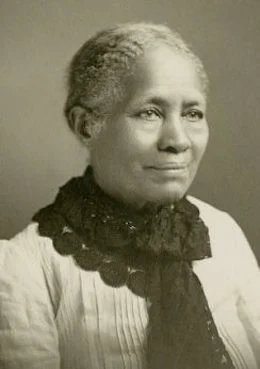As we honor Black History Month, it’s impossible to overlook the monumental contributions of Frances Ellen Watkins Harper—a woman whose life was a testament to the power of words, resilience, and unwavering commitment to justice.
Frances Ellen Watkins Harper was born in Baltimore, Maryland, on September 24, 1825. She lost her parents when she was just three years old and was brought up and educated by her uncle, William Watkins, an A.M.E preacher and abolitionist.
Harper’s journey into activism was influenced by her uncle, Rev. William J. Watkins Sr., a staunch civil rights advocate. Inspired by his teachings, she embarked on a lifelong mission to challenge social injustices.
During Reconstruction, Harper played a critical role in advocating for universal voting rights. She believed that the struggle for suffrage was not just about race or gender but about America’s commitment to justice for all. In 1866, she took the stage at the National Woman’s Rights Convention, delivering a speech emphasizing all humanity’s interconnectedness. “We are all bound up together in one great bundle of humanity,” she declared, warning that society would suffer if it oppressed its weakest members.
Frances started her writing career by publishing her first book of poetry, Forest Leaves, at age 19. After The Fugitive Slave Act passed in 1850, she moved to Ohio to teach at the Union Seminary. In 1854, she relocated to Philadelphia after meeting the well-known abolitionist William Still. She wanted to help the Underground Railroad.
In 1852, Harper moved to Philadelphia, where she became a powerful speaker on the abolitionist circuit, traveling across the U.S. and Canada to address anti-slavery organizations. Her eloquent speeches and compelling poetry made her a force to be reckoned with.

As an abolitionist, she used her writing and speaking skills to fight against slavery, racism, and gender inequality. In August 1854, Watkins gave a public speech titled “Education and the Elevation of the Colored Race” in New Bedford, Massachusetts. Her achievements in this endeavor led her to embark on a two-year lecture tour across Maine for the state Anti-Slavery Society, and from 1856 to 1860, she presented lectures throughout the Eastern and Midwestern regions.
Along with her antislavery talks, she frequently recited selections from her second book, Poems on Miscellaneous Subjects (1854), which achieved considerable success and was revised and republished multiple times. This collection addressed motherhood, separation, and death themes in the antislavery poem “Bury Me in a Free Land.”
In 1858, Philadelphia newspapers reported that she refused to give up her seat or ride in the “colored” section of a segregated trolley car, 100 years before Rosa Parks did the same.

Written primarily in traditional rhymed quatrains, her poetry was recognized for its straightforward rhythm and biblical imagery. The narrative voice she employed reflected the storytelling methods characteristic of oral tradition. Additionally, she contributed to various magazines; her story “The Two Offers,” published in the Anglo-African Magazine in September–October 1859, was reported to be the first story released by an African American author.
As a poet, novelist, abolitionist, and suffragist, Harper was a trailblazer who fought tirelessly for civil rights, women’s equality, and universal suffrage. Her legacy continues to inspire generations, reminding us that the fight for justice is as much about unity as it is about equality.
